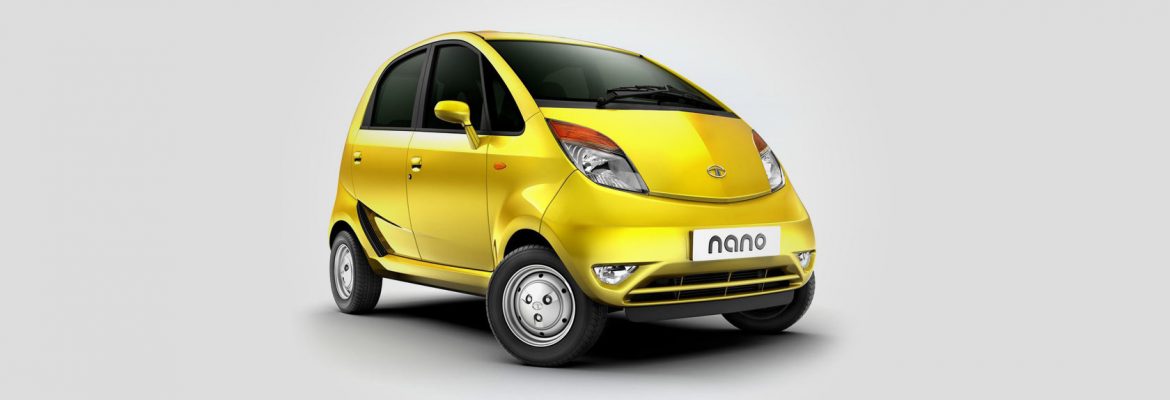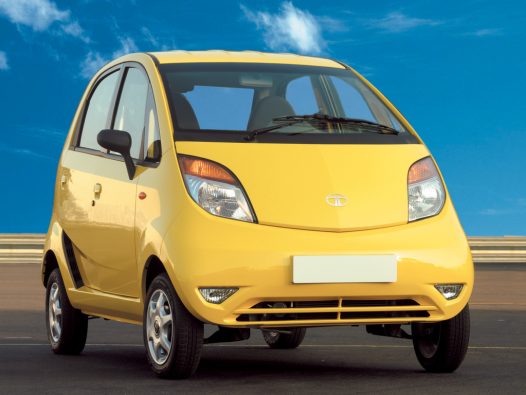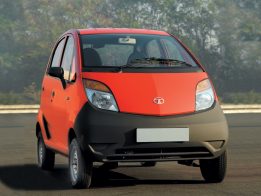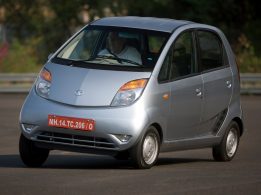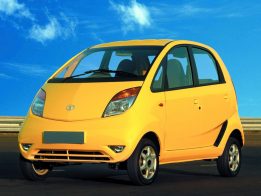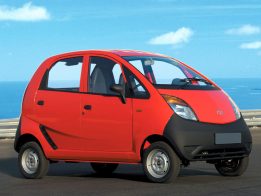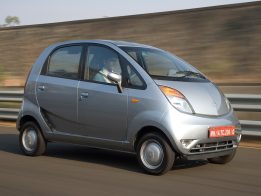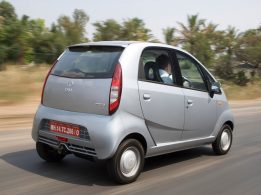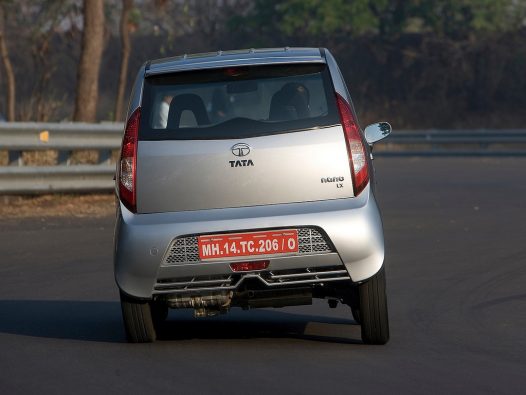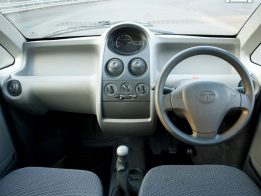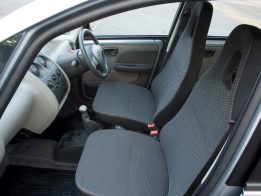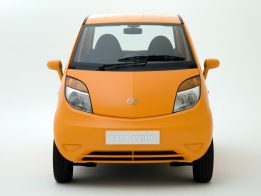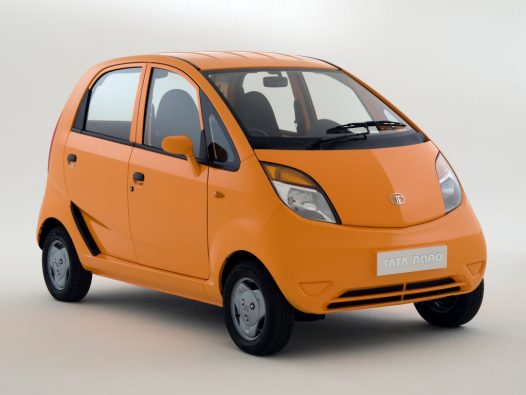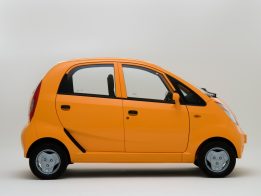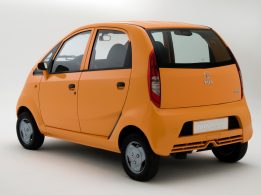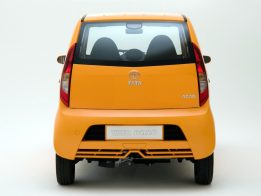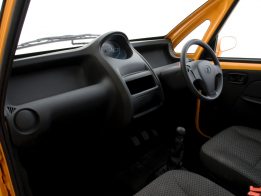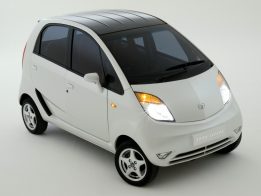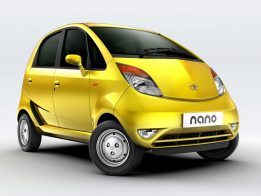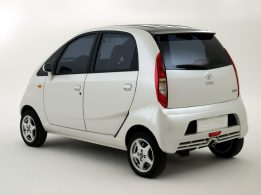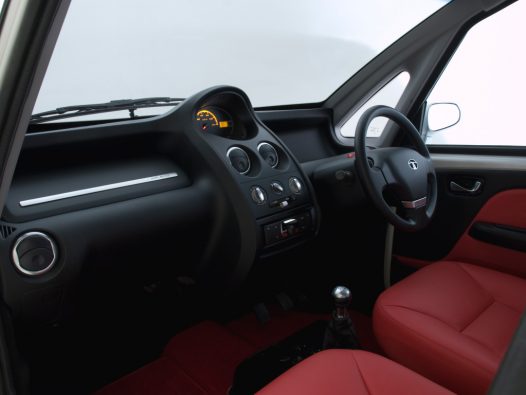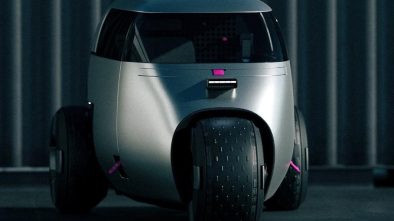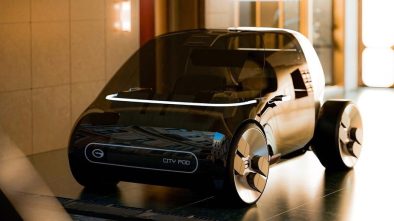Tata Nano
The Nano is one of the boldest and most fascinating back-to-basics small cars since the original Mini. Designed to lure India’s burgeoning middle classes away from two-wheelers, it received much publicity because of its suggested price of 100,000 rupees—roughly $2,000. When the car went on sale in 2009, the price was closer to $2,230, including taxes and delivery, or $3,800 for the most expensive version. That still made the Nano the world’s cheapest car, even if the price represented roughly 80 percent of the average annual salary in India.
The Nano goes back to basics in its quest for lightness, simplicity, and low manufacturing costs. It has a rear engine, which is cheaper than a front engine, as there are fewer, simpler parts needed. The engine is also a light and cost-efficient twin-cylinder unit, while the brakes are dependable drums. Thanks to the rear engine, the steering is light enough not to need assistance.
The body does not have an opening trunk, trim levels are kept to a minimum, and sound insulation is used sparingly. Even the fuel tank is reduced in size, having a mere 4-gallon (15-liter) capacity. As a result of all this, the Nano has a kerb weight of only 1,323 lb (600 kg). In spite of this lightness, the body is sufficiently strong, thanks to clever touches such as front seat frames that reinforce the body and an exposed racing bar across the rear compartment.
Tata threw out the rule book for the Nano, making a tall, narrow car when Western manufacturers were moving toward lower and ever-wider vehicles. But for Indian traffic conditions, narrowness is a virtue, while the Nano can comfortably tackle uneven roads thanks to its generous ground clearance.
The one-box design creates maximum interior space for the small size—a claimed 22 percent more than the yardstick Indian mini-car, the Maruti 800. The 12-inch wheels (fatter at the rear) prevent the wheelarches from eating into the interior, as does their position right at the corners. The wide track and long wheelbase also aid stability—important in a rear-engined car.
Despite being roughly the length of a BMC Mini— 10 ft 2 in (3.1 m) against the Mini’s 10 ft (3 m)—the Nano is impressively roomy. A long wheelbase and thin, upright seating are aids to spaciousness, as is the tall roofline. The extra height also brings with it packaging advantages. The base model has a bare minimum of trim in a low-cost jute-based fabric.
The Nano is powered by a water-cooled, all-alloy, two cylinder of just 624 cc, which is simple, economical, and weight-saving. With a single overhead camshaft, power is nevertheless a respectable 35 bhp. A balancer shaft dampens the inevitable vibrations of this engine format, and fueling is looked after by a Bosch management system that is wonderfully simple thanks to the use of only two cylinders.
